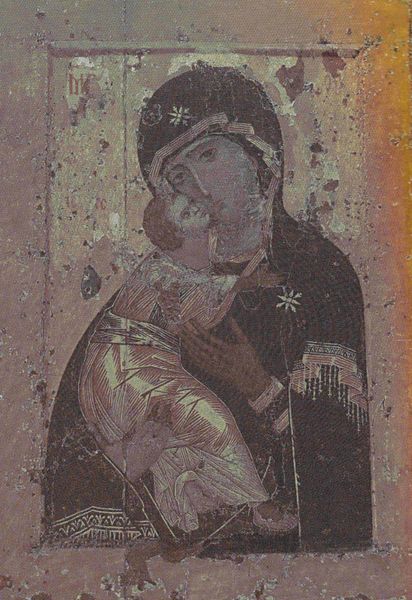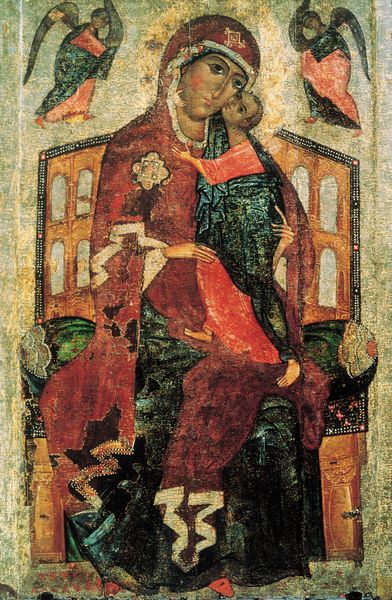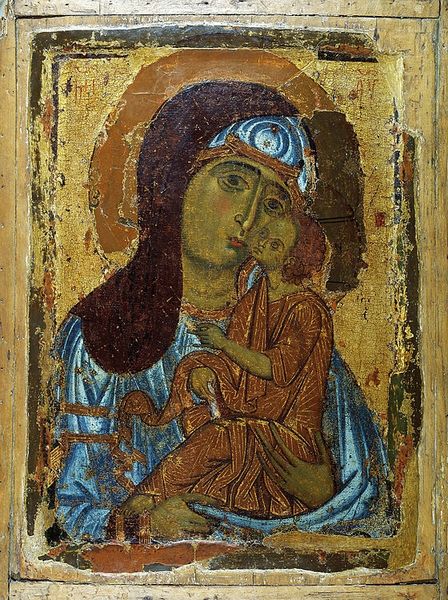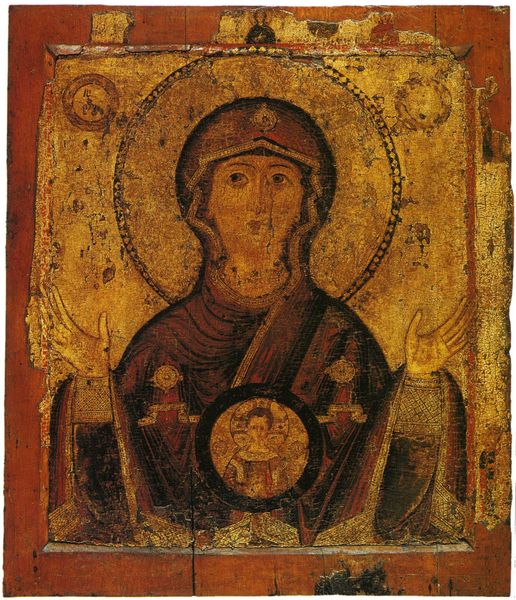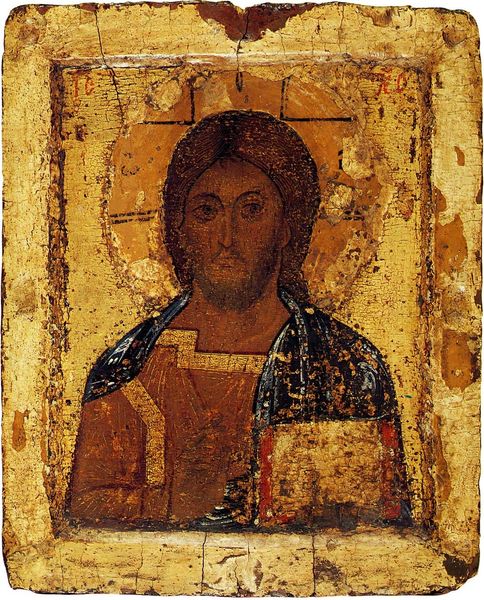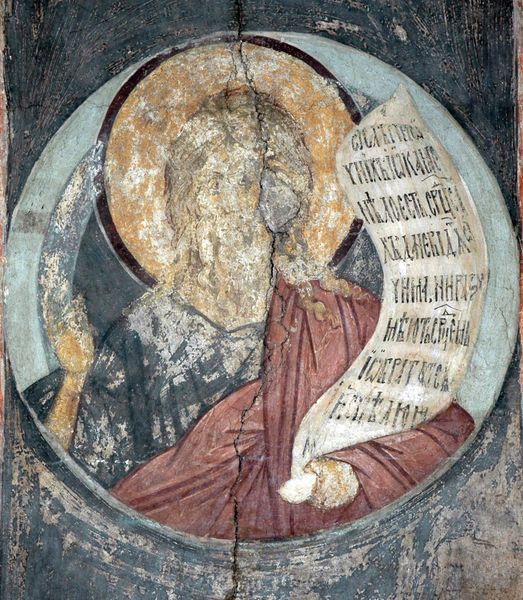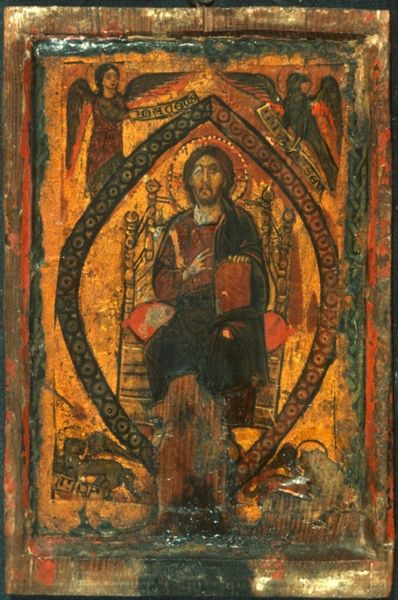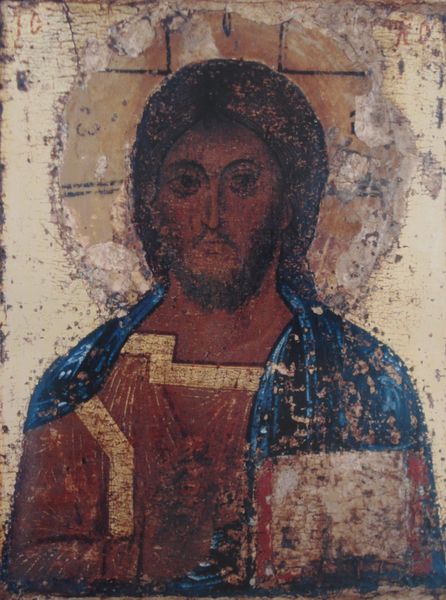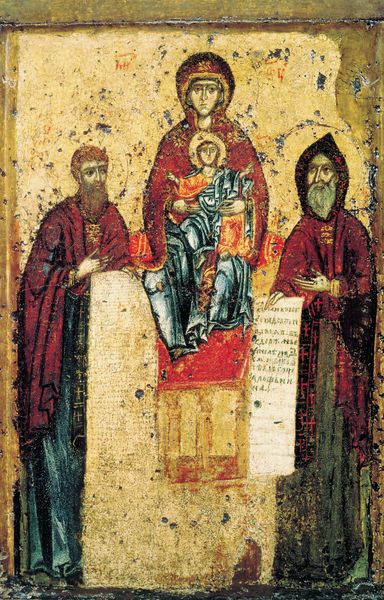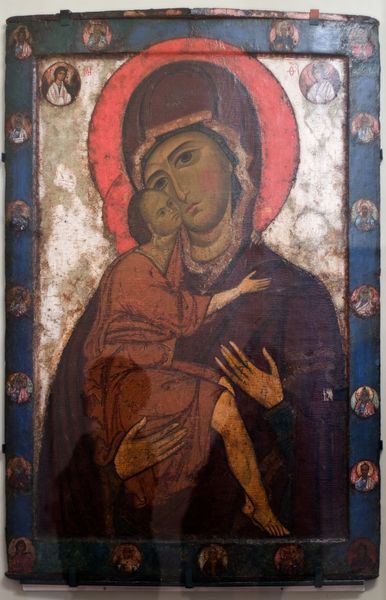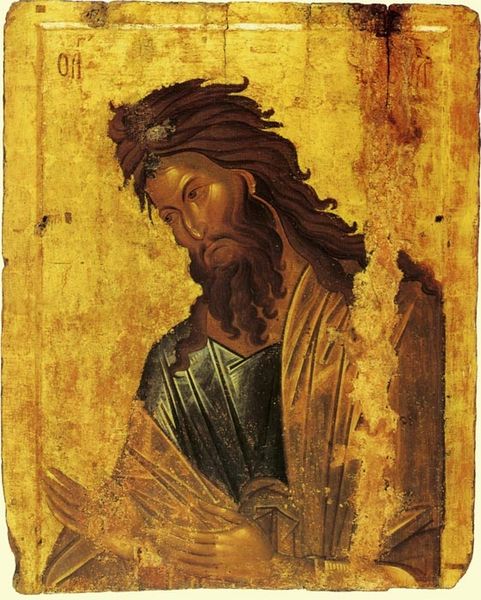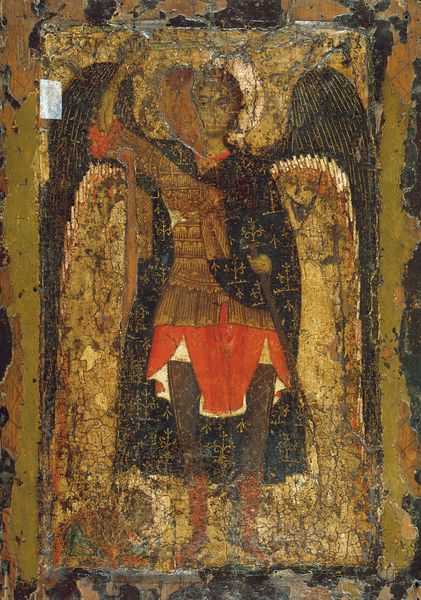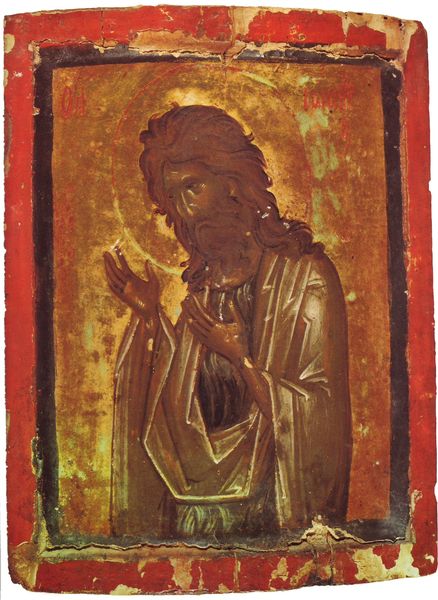
panel, tempera, painting
#
portrait
#
byzantine-art
#
medieval
#
panel
#
tempera
#
painting
#
painted
#
figuration
#
oil painting
#
history-painting
#
miniature
Copyright: Orthodox Icons,Fair Use
Curator: Standing before us is "Our Lady of Kashin (of Passion)," a tempera on panel icon dating back to around 1300. Editor: It’s remarkable! There’s a deep sense of solemnity, even through the evident wear and tear. The way the paint has aged and cracked adds a layer of history. Curator: Absolutely. This piece exists within a rich tapestry of socio-political events and evolving Orthodox doctrines. Its creation was likely influenced by the artistic conventions prevalent in the Byzantine sphere during that time. Consider how the commissioning patrons may have sought to use this artwork to solidify power, and social bonds during a fraught political period. Editor: I see what you mean, it visually manifests a narrative of power. And look at how the figures’ halos radiate—the material quality suggests an earthly depiction that carries intense political importance through the artist's skilled hand and those deliberate details. The gaze seems both loving and accusatory. How fascinating. Curator: The historical context further shapes our interpretation; such icons held a specific role in the cultural and religious landscape. This image offered a visual reference to Byzantine society's social and theological framework. It would’ve carried considerable weight in any processional or display setting. Editor: Considering gender roles, the figure of Mary, cradling Jesus, takes on significance, doesn't it? What's interesting is its appeal today, where one reads an invitation to unpack identity, and politics and also our current gaze. Curator: A perspective deeply informed by contemporary theories on power, subjectivity, and image politics, precisely! How gender, for instance, is inscribed onto these images, and what power that grants its viewers even today. Editor: Understanding this icon beyond its mere aesthetic attributes—considering its profound influence on past audiences—really brings its compelling nature into clear focus for our current engagement. Curator: Indeed, by embracing both historical analysis and modern interpretative frameworks, we can appreciate this icon's multifaceted legacy, acknowledging not only its historical roots but also its potential for inspiring critical discourse and further understanding on diverse perspectives.
Comments
No comments
Be the first to comment and join the conversation on the ultimate creative platform.
